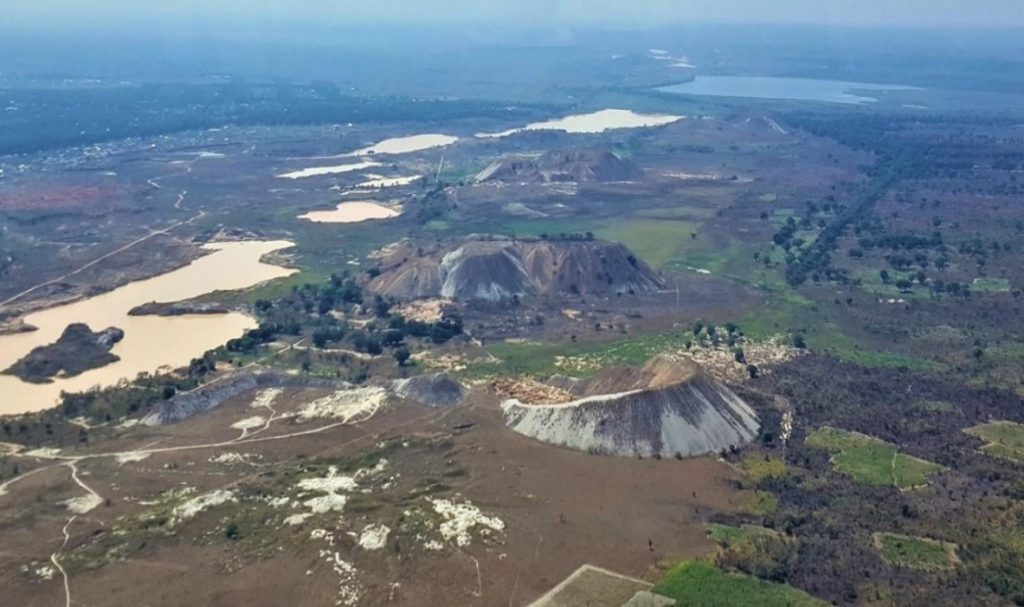AJN Resources drills an 80-100-metre wide Pegmatitic Zone at Manono Northeast Project, Tanganyika Province, DRC

AJN Resources Inc. [CSE-AJN; FSE-5AT] reported that recent drilling intersected a highly weathered, 80 to 100-metre wide pegmatitic zone in granite on its Manono Northeast Project (PR 15282) that is clearly identified in two diamond drill holes completed on Line 4800N, Tanganyika Province, Democratic Republic of Congo.
Spodumene and minor lepidolite mineralization were identified in each of the diamond drill holes. The pegmatitic zone is flat dipping to the southeast and exposed over a minimum of 300 metres at surface as interpreted from reverse circulation (RC) drilling shown.
Both diamond drill holes were stopped at the intersection of an interpreted intrusive sill, which was also intersected in the RC drill holes on lines 2800N and 4800N. It is likely that the sill intruded at a later stage within or at the base of the pegmatitic zone, the former suggesting broader widths of pegmatite can be expected below the intrusive. The drilling program has been stopped and will recommence once all drill results have been received, which will guide the infill drilling program going forward.
CEO and President Klaus Eckhof commented: “We are extremely excited that our drilling has uncovered a significant pegmatitic zone on the same trend as the high-grade lithium resources at Manono on our Manono Northeast Project. The zone lies in a similar geological setting to the Manono pegmatites being close to the granite contact and flat dipping to the southeast. We are further encouraged by the apparent occurrence of spodumene, which we expect will be confirmed via deeper drilling below the weathered zone and from assay results. The drilling has now brought us to the end of our due diligence phase and once all results have been reported, the Company expects that it will be in a good position to commit to the project and proceed to earn its initial 60% project interest.”
Fifteen RC drill holes were completed for 982 metres, two diamond drill holes for 282 metres and 83 rotary air blast (RAB) drill holes for 1,313 metres. The RC and diamond drill holes were designed to follow up on prospective areas identified in the RAB drilling, interpreted to coincide with the continuation of the Manono pegmatites onto PR 15282. The RC and diamond drilling tested 2km of potential extension of these pegmatites at two different locations. Only quartz with grain sizes varying from medium to blocky was recovered within in the RC drilling program and is interpreted to represent the pegmatite zone, which is highly weathered in the upper 50 – 60 metres zone. The company expects that the extent of mineralized pegmatites will be better defined from reported assay results when received. Granites were clearly identified at shallow levels when present in both the RC and RAB drilling.
Spodumene was identified within the weathered drill core. The property’s true lithium potential is expected to be realized in future drilling, which will target fresh, unweathered pegmatites at deeper levels.
One RC hole, KLRC015, which was drilled under alluvial artisanal workings on line 1000N, intersected 25 metres of massive quartz from surface. Results from grab samples collected from the workings reported lithium grades of up to 0.04% lithium and up to 0.18% tin in highly weathered pegmatite boulders. The assay results and abundance of quartz in the drill chips suggest a second pegmatite zone potentially exists within granites to the east of the interpreted continuation of the main Manono pegmatites.
All samples are currently being prepared and will be submitted to COAL laboratories in Lubumbashi for sample preparation with a 100g sample to be sent to ALS Global in Ireland for analysis. Assay results are due within the next 4-6 weeks.
The company intends to plan additional work on its Manono Northeast Project which has similar hallmarks to the Manono lithium occurrences. A future deeper drilling program is required to intersect potential fresh pegmatite at depth.
